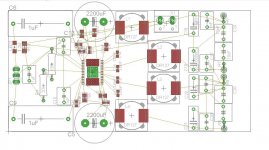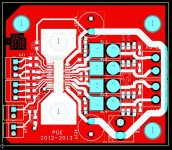Batteries are rated in volts & ampere/hours, which means that a 4.5A/hr battery will have the capacity to deliver 4.5A for one hour or it can be scaled. An example to is for above to be 0.45A for 10 hours. These are approximate numbers, used to be a guide.
No. 4.5Ah means it delivered 0.225A continuously over 20 hours. It will most like have a capacity around 2.5-3Ah if it had to deliver the full capacity over 1 hour.
That is the standard international battery capacity measurement, ie. capacity stated as drain over 20 hours.
Note that this is not the same as used for starter batteries which have significantly lower capacity when used as a continuous power source than the capacity stated on the battery, up to 3 times lower.
Last edited:
Yes, I agree a longer discharge time would more accurately reflect the charge capacity, so scale it to 20 hour to be internationally accepted and accurate. The battery mfg supplies the discharge curves if you want to find out more information.
Just don't short your Li battery or = BIG trouble.
Just don't short your Li battery or = BIG trouble.
Batteries are rated in volts & ampere/hours, which means that a 4.5A/hr battery will have the capacity to deliver 4.5A for one hour or it can be scaled. An example to is for above to be 0.45A for 10 hours. These are approximate numbers, used to be a guide.
http://www.itead.com/ Bad Request (Invalid Hostname)
As far as how long it would last, just need to figure out your load current and do some simple algebra.
9600mA/hr, TPA3116 draws say average 500mA = 19.2hours
Sorry about that - forgot the full url is this:
ITEAD Studio 2Layer Color PCB 5cm x 5cm Max
They raised the price to $15 for 10
Sounds like a cottage industry is bubbling up around this chip. Let's hope TI keeps making them.
You aren't kidding... have you seen how many reads this thread has gotten recently? That's probably a lot of YJ boards being sold online
Thx xrk971, always looking for cheap pcb fab for DIY stuff.
Don't you just love Eagle and Gerber? It's amazing what we can do from the comfort of our desks!
Just stay away from li-ion or li-po batteries altogether. Although there may be some that are ok to use, most often people will buy cheapo ebay packs and... well, the list of problems of those is too long to get into here. Just don't use them to power power amplifiers.
LFP cells (LiFePO4) while still having the name lithium stuck to them is chemically completely different and the safest battery type there is, in every sense. And despite their higher initial cost is actually also the cheapest battery type there is when measured in lifetime capacity as most are guaranteed to 2000 deep cycles or more. 10-20 times as many as SLA or li-po batteries.
LFP cells (LiFePO4) while still having the name lithium stuck to them is chemically completely different and the safest battery type there is, in every sense. And despite their higher initial cost is actually also the cheapest battery type there is when measured in lifetime capacity as most are guaranteed to 2000 deep cycles or more. 10-20 times as many as SLA or li-po batteries.
Last edited:
Working in a premium board
Well, I still had not the time to populate my 5cmx5cm board, but meanwhile I been thinking of a 5x10 with "premium" components... I started playing around with it in eagle, still need a couple of hours of work with the vias, but at the moment its looking good.
That board would be compatible with the TPA3118D2 as it has thermal down pad.
Well, I still had not the time to populate my 5cmx5cm board, but meanwhile I been thinking of a 5x10 with "premium" components... I started playing around with it in eagle, still need a couple of hours of work with the vias, but at the moment its looking good.
That board would be compatible with the TPA3118D2 as it has thermal down pad.
Attachments
Last edited:
Well, I still had not the time to populate my 5cmx5cm board, but meanwhile I been thinking of a 5x10 with "premium" components... I started playing around with it in eagle, still need a couple of hours of work with the vias, but at the moment its looking good.
That board would be compatible with the TPA3118D2 as it has thermal down pad.
Anyway to make it so that the modsel pin can be switched from gnd to logic for 1spw mode?
I'd suggest mode pins to be made as shorted 0402 or 0603 place holders with another for pull up. This way no need to solder anything for these don't need this while others my just cut trace between pads (and restore if need by soldering them together). Hate thruhole jumpers 
Nice.
Anyone up to the task of designing a tpa3116 based 5x5cm pbtl pcb ?
I did, but never ordered them...
I refined my first board for mass use but never went past design.
China stuff too cheap to compete.
Like some people have mentioned here...buy one of theirs and modify it.
What would have been the cost for producing this board?
The idea here -and I think all those who asked for a DIY board agree on it- is to have a better quality amp with an optimized design. Price is a factor, but we're not aiming to compete with the chinese ones.
Well, my "future TPA3116" PCB is not going to have 4 layers
I hear you about electronic design economics, but for me to make two 30 sq in pcb, 4 layer pcb, it cost me $50.00 USD each. I needed 4 layers because of the component density, need quiet grounds, since it a very sensitive radio with many clock sources, including a class "D" PA.
I understand how they "Asia" can can offer these products for the prices they do. It is hard to compete unless you follow their mfg model. Last job I was at, we brought electronic ballasts over by ship, in containers. Every penny counted if you want to under cut the likes of Philips/Panasonic at their own game.
4 Layers is so much more expensive. And I don't think it will get much cheaper since you need good/expensive equipment to produce pcb's with 4 layers.
And it's indeed very hard to compete with Asia! Yet, hard does not mean impossible!
Well, in that schoolproject I got the NDA, signed the NDA, got the full datasheets and serial protocols. We haven't even bought one module from the company!I looked up KeyStone module(T1-L4A-8290C), good information
The size of the BGA chip is 8mm*11mm
Sure, perfect for DIY, The modules are interesting but no doc's, must have to sign a NDA = good luck unless you want to buy 1000's. I would think not very good for DIY.
We got a development board from: DAB DAB+ FM Digital Radio Development Board Pro with SlideShow
This board has the T1-L4A-8650C, it has even more functionality. (but serial protocol is the same)
The same guy from that company also sold us some 8290 modules to develop with. (we made our own pcb)
Well, FM-radio's are standard, you can buy them everywhere. With DAB+ our client had the upper hand. DAB+ is going to be the next thing in europe, just like DVB-T. DAB+ is already widely supported in europe, so the market for Europe is quite big actually!Good stuff. Good luck in your school/career.
I was just talking to my old R&D boss from HP and he was interested as well, in my stuff. He is using same Atmel platform and writing code in C for his sail boat instrumentation, communications
We have no DAB in the North American market, so I have nothing to even test it with, unless I buy an expensive R/S SG. So not very interested in that at this time. I'll put it together with HD FM radio.
Yes, contributing is the only thing that will make the "open-source" idea great. The best thing would be that chinese manufacturers start to produce our open source stuff instead of building it themselves. (it'll probably be worse anyway)But to get this on topic again, I suggest that people do contribute to make there own Class "D" PA's, using these fine TI chips. Once you get some good libraries, it is not too hard to use Eagle to design up what you want and do a group buy, if you find enough interest, people can agree with feature set, just like user "OPC" is doing,with his wire stuff.
How's your SMT soldering skills? Teaching you that skill set at University
Cheers for the Holiday Season
Rick
My SMT soldering skills are reasonable. I do own a SMT soldering iron and flux, these will get me there when I want to solder a chip with a small outline.
Well, flux, a LOT of flux is the answer. Or you can apply soldering to the pads , place the components and put them in an (reflow-)oven. (your home-cooking oven that can reach 250 degrees Celsius will do just fineOn added benefit of the YJ boards is that they have the 3116 already soldered. I'm terrible at soldering pins that small.
A lot of people have repaired their videocard with this method!
That seems like a rather good start!Well, I still had not the time to populate my 5cmx5cm board, but meanwhile I been thinking of a 5x10 with "premium" components... I started playing around with it in eagle, still need a couple of hours of work with the vias, but at the moment its looking good.
That board would be compatible with the TPA3118D2 as it has thermal down pad.
Once you have finished it, could you send it to me?
I am thinking of creating some different versions which leaves many options left for everybody. (different inductors, different capacitors etc.)
- Home
- Amplifiers
- Class D
- TPA3116D2 Amp

